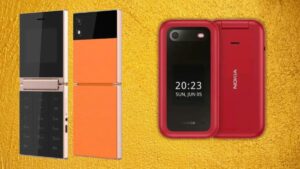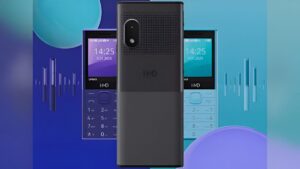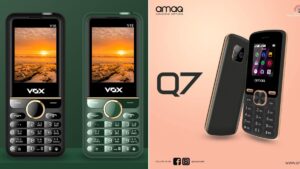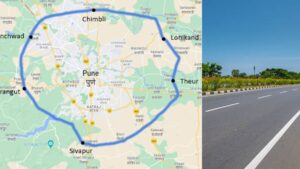India to start direct-to-mobile broadcast service within an year; Watch live TV and videos on phone without SIM card or internet
Introduction
In a significant leap towards innovative broadcasting, the central government is spearheading the development of a groundbreaking technology known as Direct-to-Mobile (D2M). This pioneering technology aims to enable users to watch live TV channels on their smartphones without the need for an internet connection.
The Essence of Direct-to-Mobile (D2M) Technology
Direct-to-Mobile, or D2M, represents a technological breakthrough, allowing the transmission of multimedia content directly to consumers’ smartphones without relying on an active internet connection. This technology, which is analogous to FM radio and direct-to-home (DTH) broadcasting, is poised to revolutionize the way we consume media. Unlike traditional methods that demand significant network bandwidth, D2M ensures a seamless delivery of content, including live TV, directly to mobile devices.
- Mobile-Centric Content Delivery: D2M offers a hybrid of broadcast and real-time content, making it ideal for both live streaming and on-demand services.
- Interactive Services: The technology also paves the way for interactive and enhanced user experiences.
- Emergency Alerts and Disaster Management: Traditionally, similar technologies have been instrumental in issuing emergency alerts and aiding in disaster management.
Government’s Role and Trials
Information and Broadcasting Secretary Apurva Chandra, addressing a broadcasting summit, highlighted the technology as a home-grown solution currently under extensive testing. The government has already conducted pilot projects in cities like Bengaluru, Kartavya Path, and Noida. Further trials are slated to commence in 19 cities, marking a significant step in this technological evolution.
Technical Insights into D2M
Understanding how D2M works is crucial. The technology functions similarly to FM radio and DTH broadcasting. However, as pointed out in a paper by IIT Kanpur, most current mobile devices aren’t inherently equipped to support D2M. To make these devices compatible, additional components like a separate baseband processing unit, antenna, low-noise amplifiers, and baseband filters are necessary.
Challenges and Implications
- Cost and Compatibility: Incorporating these additional components into smartphones might lead to increased costs and could impact the existing LTE and 5G network architectures.
- Design and Integration: The D2M network, operating in the 526MHz-582MHz band, necessitates larger antennas, posing potential design challenges in smartphone manufacturing.
Future Prospects and Impact
The advent of Direct-to-Mobile broadcasting technology signals a new era in content consumption. Not only does it promise to unclog the 5G networks by shifting a significant portion of video traffic to D2M, but it also holds the potential to democratize content delivery. The technology, developed in collaboration with Saankhya Labs and IIT Kanpur, could effectively reach the 8-9 crore ‘TV Dark’ homes across India, out of 280 million households. Additionally, it can serve as a nationwide emergency alert system, enhancing the country’s disaster management capabilities.
Conclusion
With over 80 crore smartphones in India and a high propensity for video content consumption, Direct-to-Mobile technology emerges as a beacon of digital evolution. By offering an innovative solution to network congestion and bridging the digital divide, D2M stands at the forefront of transforming how India engages with multimedia content. As we anticipate the widespread adoption of this technology, it is poised to redefine the landscape of broadcasting and telecommunications in the country.
Frequently Asked Questions (FAQs)
- What is the direct-to-mobile technique? The direct-to-mobile technique involves broadcasting multimedia content, including live TV channels, directly to mobile phones without the need for an active internet connection. This technology, utilizing the direct to mobile satellite and terrestrial infrastructure, enables seamless and uninterrupted streaming of content.
- What is D2M service? D2M service refers to the direct-to-mobile broadcasting service, which allows transmission of audio, video, and data signals directly to compatible mobile devices. This service, leveraging direct-to-mobile technology in India, aims to revolutionize content consumption by offering an alternative to conventional internet-based streaming.
- Which country made D2M technology? D2M technology is a home-grown innovation developed in India. It has been collaboratively developed by Indian entities like Saankhya Labs and IIT Kanpur, showcasing India’s prowess in the field of technology and broadcasting.
- What is D2M technology launched in India? In India, D2M technology has been launched as a pioneering solution to deliver multimedia content, including direct to mobile TV, directly to smartphones. This technology, specially tailored to the Indian context, is set to play a pivotal role in enhancing the nation’s digital infrastructure.
Additional Information
- The direct to mobile app and services related to D2M are expected to emerge as major players in the broadcasting and telecommunications sectors.
- Direct to mobile company initiatives are likely to focus on integrating this technology into existing mobile networks and devices.
- The direct to mobile price factor will be crucial in determining the accessibility and affordability of this technology for the average consumer.
- With d2m technology, India is set to witness a significant shift in how digital content is accessed and consumed.
For further details on the implementation, costs, and potential impact of Direct-to-Mobile technology, please refer to the original sources or official government announcements.







